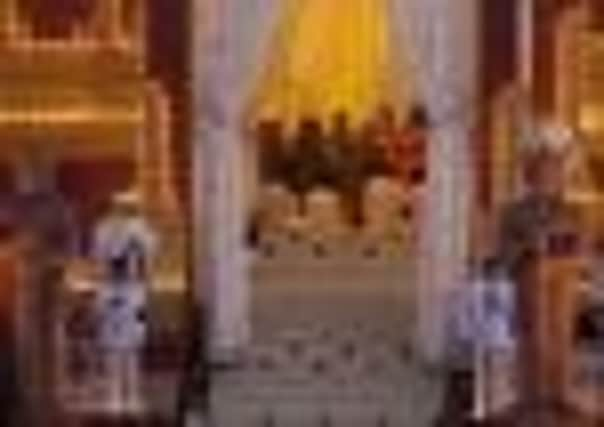Cambodians says final farewells to King Norodom Sihanouk


Hundreds of thousands of Cambodians thronged the capital yesterday for the elaborate royal cremation of the mercurial leader whose charm often overshadowed mistakes that to most of his countrymen have faded away in a fog of nostalgia for a simpler time.
These elaborate funeral rites – mingling Hindu, Buddhist and animist traditions – were last seen 53 years ago with the death of King Sihanouk’s father, King Norodom Suramarit. They may never be seen again in a rapidly modernising country where the monarchy has lost much of its power and glamour.
Advertisement
Hide AdAdvertisement
Hide AdAfter sunset, King Sihanouk’s son, King Norodom Sihamoni, and widow, Queen Mother Norodom Monineath, lit the funeral pyre inside a temple-like, 15-storey-high crematorium. Howitzers fired salvos and fireworks lit up the sky when they emerged about 30 minutes later.
After the cremation, King Sihamoni handed out gifts to 400 prisoners he had earlier pardoned as part of the mourning for his father, who he said was “in heaven, near the Lord Buddha, forever”.
“May the much revered king support and protect the entire Kingdom of Cambodia and Cambodians forever,” he said.
The cremation took place within a walled compound where 90 Buddhist monks – one for each year of King Sihanouk’s life as counted by Cambodians – chanted around the flower-bedecked gilt coffin.
Only the country’s elite and foreign dignitaries were allowed inside the crematorium’s grounds, plus courtiers dressed in pantaloons and soldiers in 19th century-style uniforms with spiked helmets and swords.
Outside, Cambodians gathered to remember the late king.
“I would exchange my life for his if he could live because he was a great leader who brought peace, prosperity for the whole nation,” said Pal Hor, 64,who had come from the distant province of Battambang. He said he shaved his head out of reverence for the deceased monarch.
The huge crematorium – built just for this funeral at a cost of about £760,000 – will now be dismantled, in keeping with Cambodian tradition.
King Sihanouk’s body had been lying in state since he died of a heart attack in Beijing on 15 October at the age of 89.
Advertisement
Hide AdAdvertisement
Hide AdThe king was placed on the throne by the French as a teenager. But instead of proving the puppet Paris had hoped for, King Sihanouk went on to win independence, then rule as monarch and head of state until removed in a 1970 coup.
A charismatic figure, King Sihanouk sided with the Khmer Rouge in their successful revolt against the US-backed government, but after the victory of the ultra-communists in 1975, he and his wife were held prisoners in the palace. Five of his children died during the reign of terror.
He emerged as a leader of an insurgency fighting a Phnom Penh government installed by the Vietnamese and brokered a peace accord that enabled his return to the throne in 1993.
He abdicated 11 years later in favour of his son Sihamoni, 59, a former ballet dancer who had spent most of his life in European artistic circles. He has proved a low-key constitutional monarch overshadowed by strongman prime minister Hun Sen.
King Sihanouk’s dark side, particularly his co-operation with the Khmer Rouge and his often brutal suppression of dissent, has been publicly ignored as loudspeakers broadcast eulogies and TV stations show old clips of his triumphs. A larger-than-life character, he directed films and led his own jazz band and football team. He married at least five times – some say six – and fathered 14 children.
In the coming days, some of King Sihanouk’s ashes will be scattered near the confluence of the four rivers in Phnom Penh, while others will be put in an urn which will be placed on the grounds of the Royal Palace near those of his favourite daughter, Kunthea Buppha, who died at the age of three.